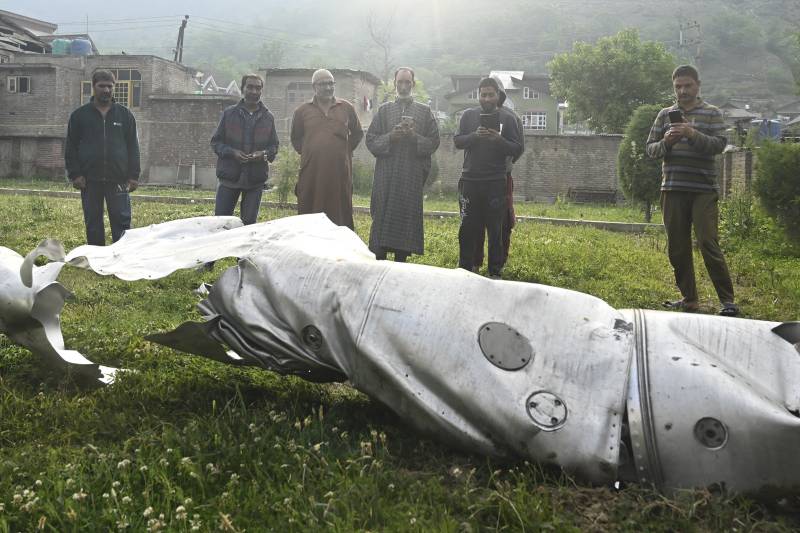Introduction
The skies over South Asia witnessed a historic confrontation in 2025 as Pakistan’s military successfully downed five Indian fighter jets, marking a dramatic escalation in regional tensions. The aerial clash, which followed a series of late-night strikes at six critical sites in Pakistan, has ignited global debates on military strategies, geopolitical stability, and the future of Indo-Pak relations.
Prelude to the Clash
The conflict began with a series of coordinated airstrikes launched by Indian forces targeting strategic locations across Pakistan. According to military officials, the strikes were intended as a show of strength amid rising border tensions. Pakistan’s response was swift and decisive. Within hours of the initial strikes, Pakistani air defense systems engaged and neutralized five Indian jets, demonstrating a robust defensive capability.
This exchange is seen as one of the most significant aerial confrontations between the two nuclear-armed neighbors since the Pulwama incident in 2019. Analysts suggest that the rapid escalation reflects deep-seated geopolitical rifts and unresolved territorial disputes, particularly over Kashmir.
Pakistan’s Strategic Response
The Pakistan Air Force (PAF) executed a meticulously planned response, leveraging advanced radar systems and coordinated air patrols. Military spokespersons confirmed that Pakistani jets engaged Indian aircraft in restricted airspace, downing them with precision. Eyewitnesses reported seeing flaming wreckage scattered across border villages, underscoring the intensity of the skirmish.
Pakistan’s Prime Minister lauded the military’s preparedness and resilience, emphasizing the country’s right to defend its sovereignty. ‘Our armed forces are equipped and ready to respond to any aggression,’ he stated during a televised address.

Global Reactions
The international community responded with a mix of concern and calls for restraint. The United Nations Security Council convened an emergency session, urging both nations to de-escalate and engage in dialogue. China and Turkey expressed support for Pakistan’s right to self-defense, while Western nations advocated for diplomatic measures to prevent further conflict.
Regional players like Iran and Saudi Arabia called for stability, fearing that continued escalation could disrupt trade routes and economic partnerships. The Organization of Islamic Cooperation (OIC) also condemned the strikes, pledging diplomatic support to Pakistan in international forums.
Media Coverage and Public Sentiment
News outlets across the globe covered the incident extensively, highlighting the potential for broader regional instability. Social media platforms buzzed with reactions, with hashtags like #PakistanStrikesBack and #DefendOurSkies trending worldwide. In Pakistan, the mood was largely patriotic, with citizens expressing pride in the military’s decisive action. Indian media, meanwhile, focused on government responses and military preparedness.
Political commentators observed a surge in nationalist rhetoric on both sides, with public rallies and displays of military strength becoming more common. The political discourse emphasized sovereignty and defense, further hardening public opinion against reconciliation efforts.
Historical Context and Military Preparedness
This clash marks another chapter in the long-standing military rivalry between Pakistan and India. Historically, the two nations have engaged in several conflicts, primarily centered around the Kashmir dispute. Experts argue that this latest aerial confrontation is not an isolated incident but part of a broader strategic competition in South Asia.
Military analysts note that Pakistan’s air defense capabilities have seen significant upgrades in recent years, a factor that likely contributed to the swift response. Investments in radar technology, surface-to-air missiles, and fighter jet modernization have positioned the PAF as a formidable force in the region.
Long-term Implications
The aerial clash has reignited debates on air defense capabilities, strategic deterrence, and the role of international diplomacy in South Asia. Experts suggest that the incident could lead to an arms race, with both nations seeking to bolster their aerial defenses and offensive capabilities.
Furthermore, the event may redefine the rules of engagement in the region, with stricter monitoring of airspace violations and more aggressive posturing by both sides. The diplomatic fallout could also influence global perceptions of security in South Asia.
Additionally, this conflict has highlighted the importance of technological advancements in modern warfare. The role of drones, satellite surveillance, and cyber capabilities is expected to be crucial in any future engagements between these two nations.
Conclusion
The Pakistan-India Aerial Clash of 2025 marks a critical moment in regional geopolitics. As both nations regroup and assess their strategies, the world watches closely, hoping for diplomacy but preparing for the possibility of further conflict. This incident serves as a stark reminder of the fragile peace in South Asia and the urgent need for sustained dialogue and conflict resolution mechanisms.
While diplomatic channels remain open, the trajectory of this conflict will depend largely on the political will of both nations to prioritize peace over posturing. The coming months will be crucial in determining whether this clash becomes a stepping stone towards resolution or a precursor to deeper regional instability.







Leave a Reply